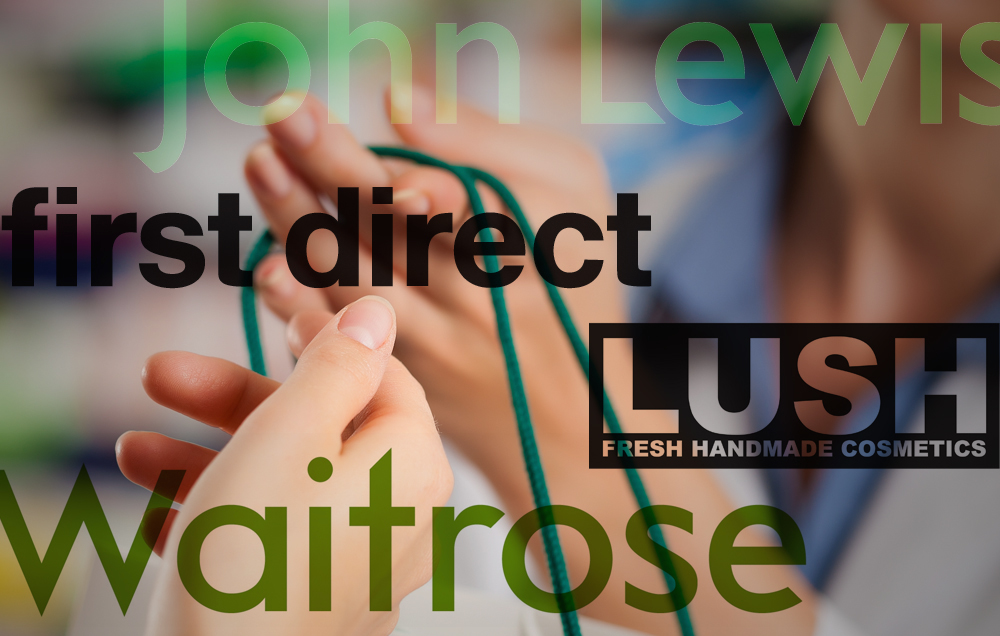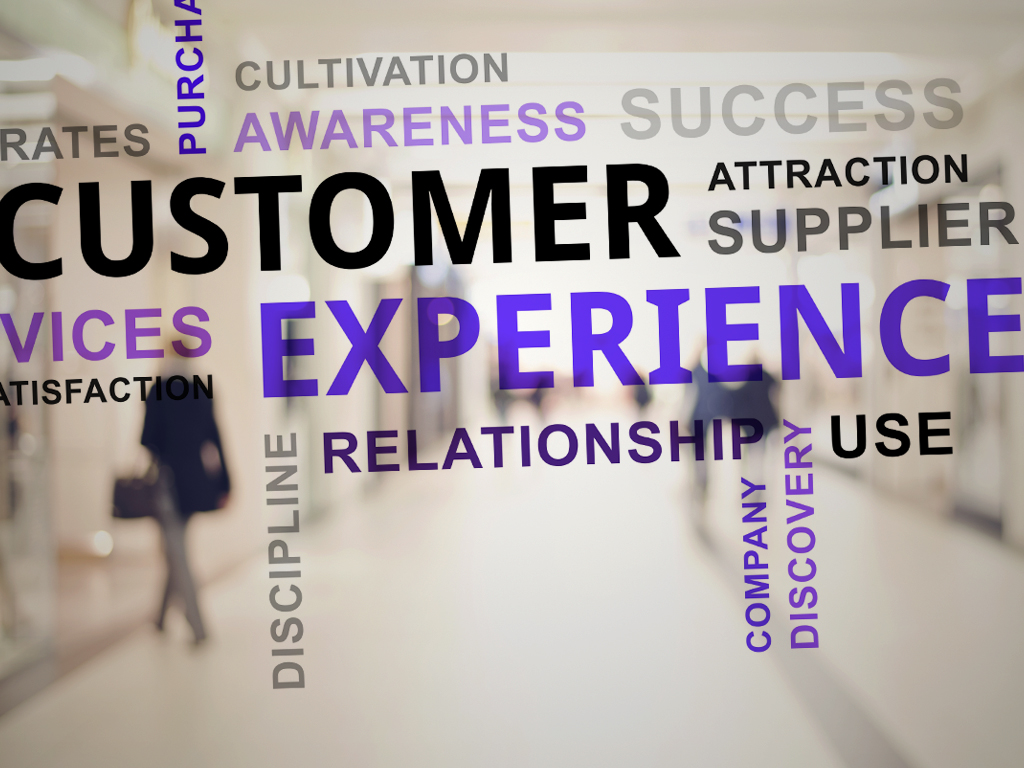Even as we move closer to a future with smart roads, cities, and theme parks, there are some customer experiences – like drive-throughs, in-store retail and buying a car – that remain predominantly analog. Several brands – including McDonald’s, Ford, and Adobe – recently shared details on how they are digitizing analog experiences.
These analog-turned-digital moments provide a better customer experience by removing the potential for friction and by personalizing interactions, and show how easy picking up a coffee, a bike helmet, or a luxury sedan might be in the not-so-distant future.
Here’s a closer look at what these brands have in the works.
Restaurants

McDonald’s is on a journey of “complete transformation,” according to Deborah Wahl, senior vice president and CMO of McDonald’s USA. All aspects of the brand must change, starting with food and the addition of antibiotic-free chicken and kale – not to mention all-day breakfast, which she said helped push McDonald’s to its highest Q4 income ever.
But with 26 million daily customers in the U.S. alone, driving change across the organization is no easy task. Per Wahl, the brand’s core tenets are quality, service and convenience, so McDonald’s must deliver on those expectations in a consistent manner, while nevertheless surprising and delighting its consumers. That means focusing on timing and balance.
“In digital, there are a lot of shiny toys,” she said. “We were the first to jump into mobile pay because we saw where that went and that was good… People look at brands and say they’re behind, but it’s what can you do first – what’s the biggest customer need? Let’s solve that and then do all the other things, but at the right time and moment. That takes a lot of discipline because there’s lots of new stuff.”
Those shiny new toys for McDonald’s include an app with more than 10 million downloads and self-service kiosks in 1,000 locations, as well as a VR experiment with Happy Meals in Sweden and an integration with FordPass in the U.S.
Ford described FordPass as a platform that “reimagines the relationship between automaker and consumer.” It includes a so-called mobility marketplace – FordPass Marketplace – which includes vehicle controls and smart parking reservations, as well as “mobility experience centers” called FordHubs, one-on-one help via FordGuides and FordPass Perks, or “rewards that will make your journey enjoyable.”
The McDonald’s integration falls under the latter. Additional FordPass Perks partners include 7‑Eleven. Ford says these integrations allow the brand to “recognize members with access to merchandise and unique experiences.”
It’s unclear how exactly these brands will execute the aforementioned access to merchandise. However, it’s possible this could include, say, the ability to order food.
This isn’t wild speculation. If it doesn’t come from McDonald’s and/or Ford, it may very well be made reality from brands like Tesla and/or Dunkin’ Donuts, which had a proof-of-concept demonstration at Adobe Summit.
In fact, David Nuescheler, an Adobe fellow and the vice president of enterprise technology, said, “There’s no such thing as an analog experience anymore. Even the poster has been digitized.”
Like McDonald’s self-serve kiosks, Nuescheler demonstrated an intelligent Dunkin’ Donuts kiosk that taps into Adobe’s Marketing Cloud to allow customers to configure their coffees and teas precisely how they want them. In theory, the kiosk could recognize consumers by their mobile devices and feature personalized content when those consumers enter a Dunkin’ Donuts location, and even allow these customers to easily order their favorite drinks simply by tapping their phones on the kiosk.
“It’s the magic you need to make yourself homogenous,” Nuescheler said.
That magic extends to the drive-through.
Calling a car the “ultimate mobile device” and “the oldest member of the Internet of Things,” Nuescheler said, “The drive-through hasn’t evolved since the ’50s. We want to change that.”
That means a bold new future in which customers can place drive-through orders via touchscreens in their cars, which, again, like the McDonald’s self-service kiosks above, confirm order details to avoid mistakes and enable easy mobile payments.
Retail
 While online shopping certainly has many benefits attractive to consumers, there may soon be ways for retailers to digitize their in-store experiences beyond beacons and push notifications.
While online shopping certainly has many benefits attractive to consumers, there may soon be ways for retailers to digitize their in-store experiences beyond beacons and push notifications.
For his part, Marc Eaman, Adobe’s director of Marketing Cloud technical marketing, illustrated the example of how technology can transform the heretofore analog process of buying a bike helmet from a physical store.
In another proof-of-concept demonstration, he used Google to search for “bike helmet” on his phone and saw an ad from outdoor retailer REI, which took him to REI’s mobile site, which invited him to install the REI app. From there, Eaman was able to access REI’s helmet selection and was then asked to log in to the app to purchase the helmet he wanted.
However, when logging in, he received a push notification that there was an REI location nearby and the app asked if he wanted to open Maps for directions. When he arrived at the store, he received not only a welcome message from REI, but also an invitation to try out the brand’s Smart Bag experience that combines beacons, Bluetooth, and RFID technology to provide a better shopping experience.
The REI app can be connected to the Smart Bag simply by tapping it and, from there, Eaman placed the helmet in the bag and, once he left the store, the Smart Bag understood he had left the premises and charged his account for the item within.
“This is re-envisioning the shopper journey…for an immersive retail experience,” Eaman said. “And it’s an experience that has delighted me in the digital and physical world.”
Car Dealerships

Another traditionally analog experience: Buying a car. Because in part customers don’t go to showrooms as frequently as they did 10 years ago, Mercedes-Benz has been working to evolve not only its dealerships, but also its messaging, said Natanael Sijanta, director of marketing communications at Mercedes-Benz.
“In the ‘80s, it was easy. Customers came in and you sold them a car. You did not have to do much,” Sijanta said. “We’ve had to change the perception of every employee and the mindset of employees to a seamless brand experience.”
However, he also noted that even in a digital world, there still has to be some kind of physical handover of the car at some point and cars will return when they need service, so he thinks dealerships will not disappear completely – but their perception will change. This dealership evolution includes rethinking customer touchpoints.
“We have to go where our customers are, like with pop-up stores or radically rethinking what we do in terms of sponsorship or any other activity,” Sijanta said.
Those activities include fashion shows, like its sponsorship of Fashion Week in New York, Berlin, Australia, Istanbul, and Miami, and related content, like its Obsession with an Icon video, which Sijanta said tries to approach fashion communication in a way the community likes, but that also includes Mercedes’ values and insights.
https://youtube.com/watch?v=GIO8cpiEG0U“The product is our ecosystem,” Sijanta said. “We have to become a constant element in [our] customers’ [lives]. It’s not just driving to work and home or to the gym. We have to become part of our customers’ lifestyle.” Mercedes taps into that lifestyle through relevance,
“The product is our ecosystem,” Sijanta said. “We have to become a constant element in [our] customers’ [lives]. It’s not just driving to work and home or to the gym. We have to become part of our customers’ lifestyle.”
Mercedes taps into that lifestyle through relevance, emotion, and exclusivity, delivering content like behind-the-scenes livestreams from auto shows.
“People feel respected because they get to see behind the scenes,” Sijanta said. “You have to find intelligent ways to talk to customers.”
In addition to messaging, Mercedes has revolutionized its overall brand experience with the addition of features like its Mercedes me portal, which gives owners access to services, products and “lifestyle offers” from Mercedes, its parent Daimler and their partners in what Sijanta described as “a personalized ecosystem.” Along with the portal has come a
Along with the portal has come a Mercedes me store in Hamburg, which the brand says “revolves around just one thing: you.”
Each month, Mercedes says its Mercedes me store will focus on “a new, interesting theme,” as well as “unique events, thrilling stories and very special people” because “everything’s possible at the Mercedes me store: fashion show, art exhibition or music event, a latte macchiato with a view over the Inner Alster Lake or an opportunity to configure your Mercedes.”
Along with Mercedes me has come a second screen real-time racing experience, My Race Hub.
“This is only available to our drivers with our cars,” Sijanta said. “It’s one-of-a-kind content relevant to them, exclusive and emotional.”
These efforts have helped connect Mercedes to consumers outside of dealerships, but further change is afoot.
“Young customers don’t think about owning a car,” Sijanta said. “They just want to get from A to B.”
As a result, Mercedes is also rethinking its business model to adjust to the lifestyles of these future customers. And that means Mercedes is looking into short-term rentals and pay-per-use options and has acquired some startups as a result, Sijanta added.
What digitized analog experience are you most eager to see in real-life executions? Why?


